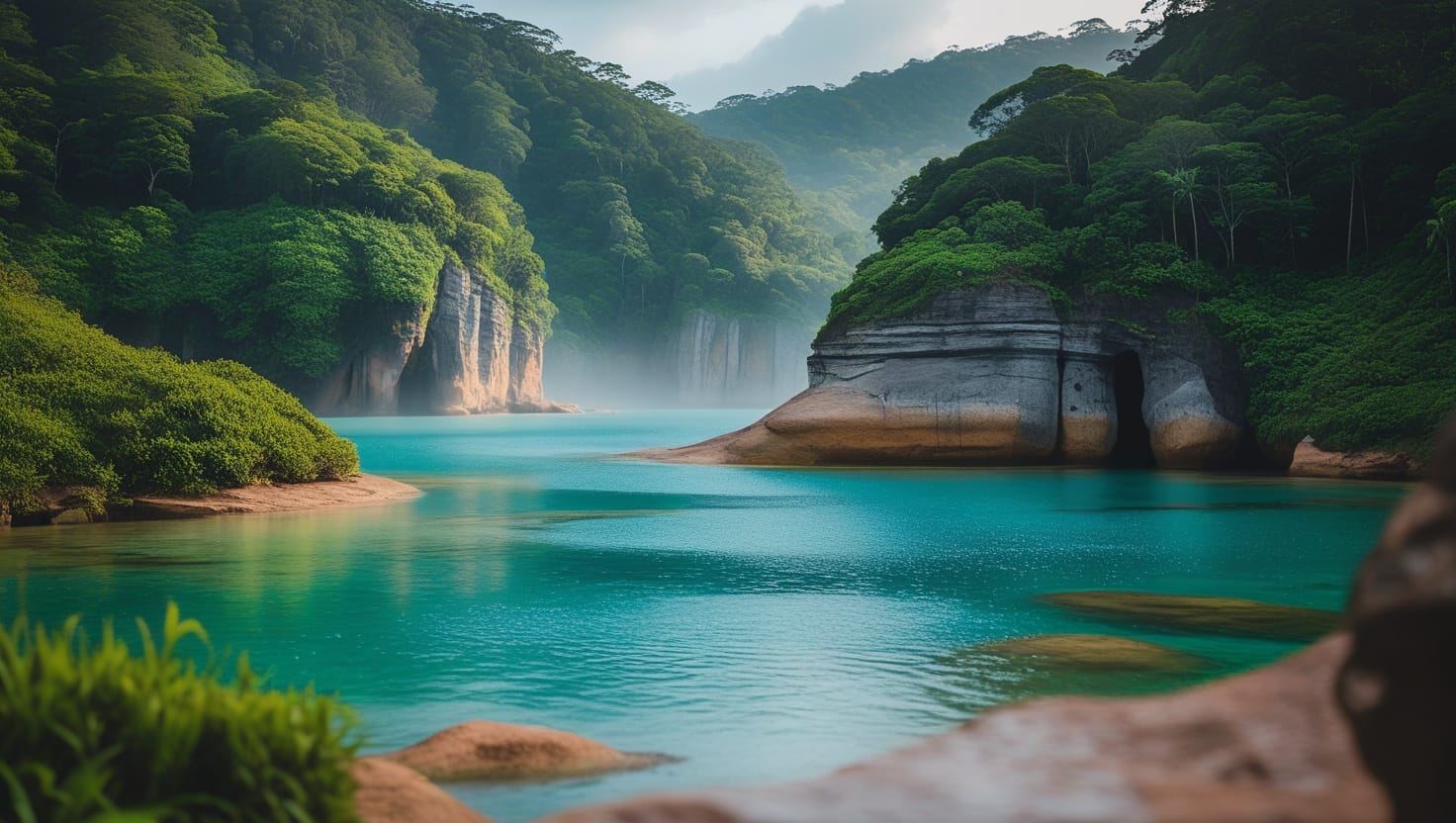Chitwan National Park, Nepal Travel Guide
Nestled in the subtropical lowlands of southern Nepal, Chitwan National Park is a UNESCO World Heritage Site and one of the most biodiverse ecosystems in the Indian subcontinent. Renowned for its dense sal forests, sprawling grasslands, and rare wildlife like the one-horned rhinoceros and Bengal tiger, Chitwan is a must-visit destination for nature lovers, cultural explorers, and eco-tourists alike. This guide offers everything you need to plan an enriching and responsible trip to this remarkable park.
1. Destination Highlights
Must-Visit Landmarks & Natural Wonders
- Chitwan National Park Core Area: Explore 952.63 km² of protected wilderness, including riverine forests, oxbow lakes, and expansive meadows.
- Rapti and Narayani Rivers: Key water bodies offering serene landscapes and essential habitats for crocodiles and waterfowl.
- Bish Hajari Tal (20,000 Lakes): A tranquil lake system ideal for birdwatching and picnic stops.
Unique Cultural/Historical Significance
- Tharu Villages: Experience the traditional way of life of the indigenous Tharu people, known for their mud-painted houses, folk dances, and resilience.
- Conservation History: Established in 1973, it was Nepal’s first national park, created to protect declining rhino and tiger populations.
Best Viewpoints or Photo Spots
- Kasara Lookout Tower: Offers panoramic views of the jungle and open plains.
- Elephant Breeding Center Viewpoint: Capture photos of young calves playing in natural enclosures.
2. Offbeat Nature Spots
Hidden Gems
- Lami Lake: A quieter alternative for spotting migratory birds and aquatic life.
- Bagmara Buffer Zone Forest: Ideal for tranquil walks and fewer crowds.
Local Secrets
- Sunrise at Sauraha Riverbank: Watch the morning mist lift over the Rapti River.
- Sunset from Meghauli Viewpoint: Offers breathtaking silhouettes of the jungle.
3. Activity-Based Listings
Trekking/Hiking Routes
- Jungle Walks (Sauraha Area)
- Difficulty: Beginner to Intermediate
- Trail Length: 3–10 km
- Time: 2 to 6 hours
- Highlights: Rhinos, birds, sloth bears, medicinal plants
Wildlife Safaris
- Jeep Safaris: Best for deep jungle exploration
- Zones: Kasara, Bish Hajari, Tamor Tal
- Booking: Online or via hotel desks (Govt & Private options available)
- Canoe Safari: Quiet river cruise ideal for gharial, mugger crocodiles, and kingfishers
Adventure Sports
- River Rafting on Trishuli (nearby)
- Difficulty: Beginner to Intermediate
- Operators: Licensed local agencies
- Paragliding in Pokhara (Extension Trip)
- Can be combined with Chitwan via scenic drive
Eco-Tourism
- Tharu Homestays: Participate in daily activities, farming, and cooking.
- Wildlife Volunteering: Join short programs in conservation, animal monitoring, or park clean-up.
4. Practical Information
Best Seasons
- October–March: Dry, cool weather ideal for safaris
- April–June: Hot but good for tiger sightings
- July–September: Monsoon; lush scenery but slippery trails
Monthly Weather Breakdown
- Jan–Feb: Cool and misty (15°–23°C)
- Mar–May: Hot and dry (30°–40°C)
- Jun–Sep: Wet season (25°–35°C)
- Oct–Dec: Pleasant and green (20°–30°C)
Festivals/Events
- Chhath Puja: A riverside worship festival celebrated by Tharu communities.
- Elephant Festival (December): Features elephant beauty contests, football matches, and cultural parades.
Permits/Guides
- Park Entry: NPR 2,000 (foreigners), NPR 1,000 (SAARC)
- Where to Book: NTNC offices, Sauraha info center, or lodge desks
Packing Tips
- Essentials: Neutral-colored clothes, insect repellent, hat, hiking boots
- Rainy Season: Raincoat, waterproof bags
- Prohibited: Plastic wrappers, loud sound systems, firearms
5. Sustainable Travel Options
Eco-Friendly Stays
- Barahi Jungle Lodge: Uses solar energy, eco-building materials
- Tiger Tops Tharu Lodge: Pioneers of sustainable luxury in Nepal
Responsible Tourism
- Avoid Elephant Rides: Opt for ethical wildlife viewing on foot or jeep
- Buy Local: Tharu handicrafts, honey, herbal teas
Conservation Projects
- NTNC Projects: Support anti-poaching and habitat restoration by donating or volunteering
- Community Forest Initiatives: Tourists can join tree planting or awareness campaigns
6. Local Insights
Flora/Fauna Guides
- Endangered Species: One-horned rhinoceros, Bengal tiger, gharial, pangolin
- Birdwatching Hotspots: Bish Hajari, Lami Tal, Rapti Riverbanks
Cultural Connections
- Tharu Cultural Museum: Displays tools, artifacts, and traditional attire
- Handicraft Workshops: Basket weaving and clay-pot making
Weather Alerts
- Monsoon Cautions: Flood-prone riverbanks, leeches on jungle trails
- Park Closures: Occasionally during extreme weather
7. How to Visit
Best Way to Reach
- Air: Fly from Kathmandu to Bharatpur (20 mins), then 30 min drive to Sauraha
- Bus/Van: Tourist buses from Pokhara or Kathmandu (5–7 hours)
- Road Trip: Scenic via Mugling–Narayanghat Highway
Luxury & Affordable Hotels
- Luxury:
- Meghauli Serai by Taj
- Barahi Jungle Lodge
- Kasara Resort
- Budget:
- Hotel Parkland
- Jungle Safari Lodge
- Sweet Home Guesthouse
Booking Hacks
- Book off-season for 20–30% discounts
- Combine packages for room + activities to save
Best Food
- Must Try:
- Tharu Fish Curry
- Dhido with Gundruk
- Banana Flower Stir Fry
- Vegan/Gluten-Free Options:
- Lentil soup, rice, seasonal veggies, fruit platters
Bonus Enhancers
Maps: Include pinned Google Maps for major safari trails and lodges.
Itineraries:
- 3-Day: Safari + canoe + village tour
- 1-Week: Full jungle trek, buffer zone tour, cultural workshop
Local Quotes:
“When you walk through the forest quietly, the jungle tells you its story.” — Bikas, Tharu Guide
Safety Tips:
- Avoid solo jungle walks
- Respect animal boundaries
- Carry emergency whistle and first-aid kit
Chitwan National Park isn’t just a destination—it’s an immersive, ethical, and awe-inspiring journey into the heart of Nepalese wilderness and tradition. Whether you come for the rhinos or the rhythms of the Tharu people, Chitwan leaves an unforgettable imprint on every traveler.



Leave a Reply